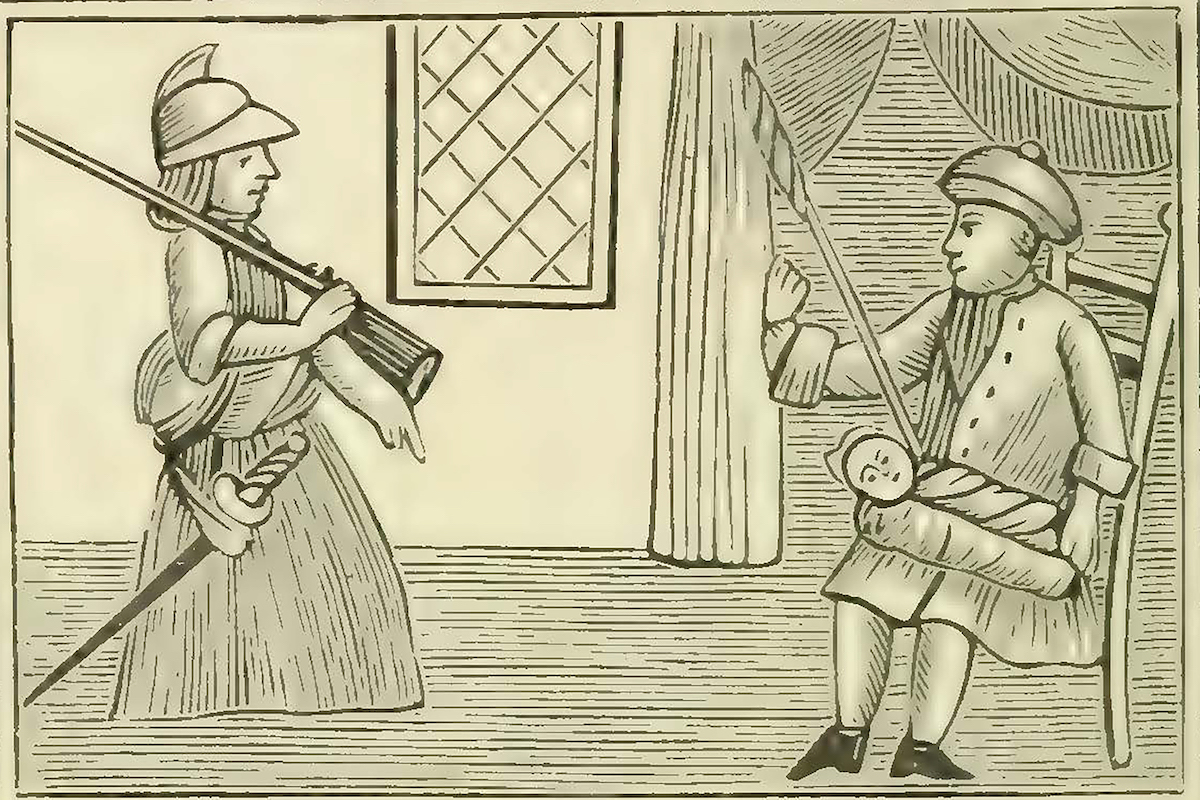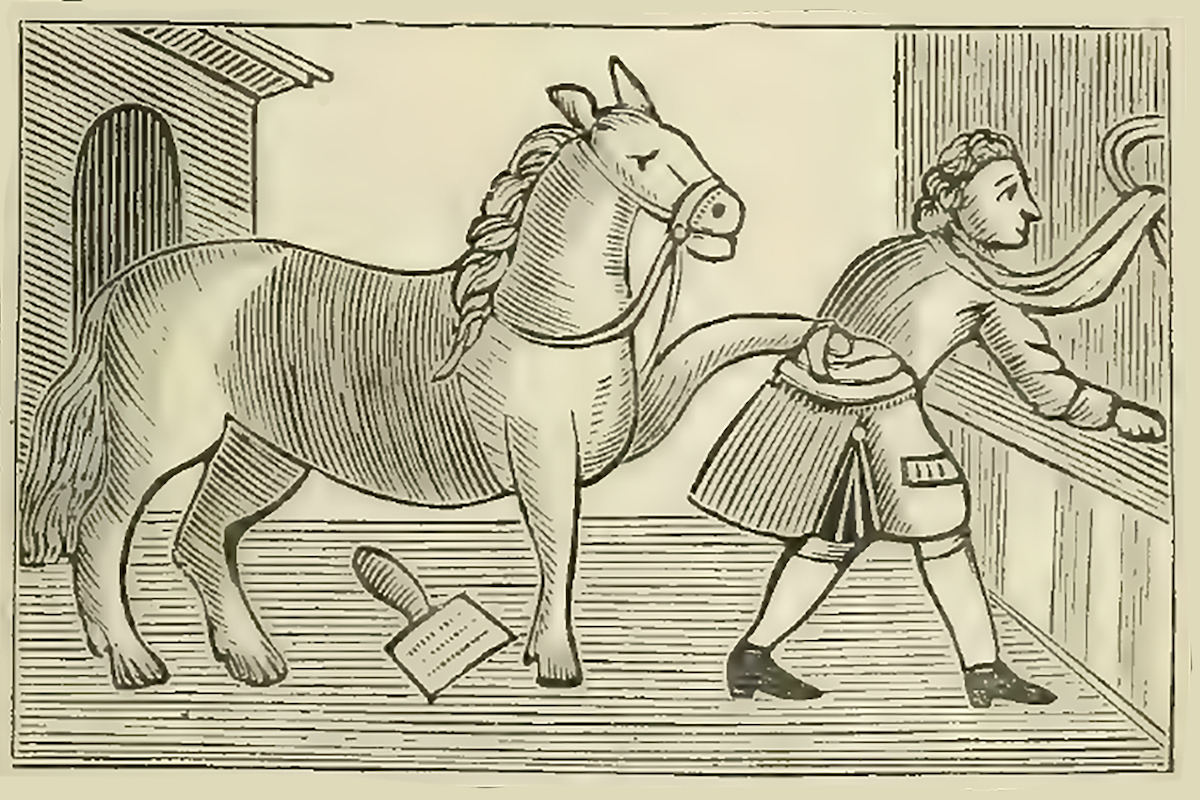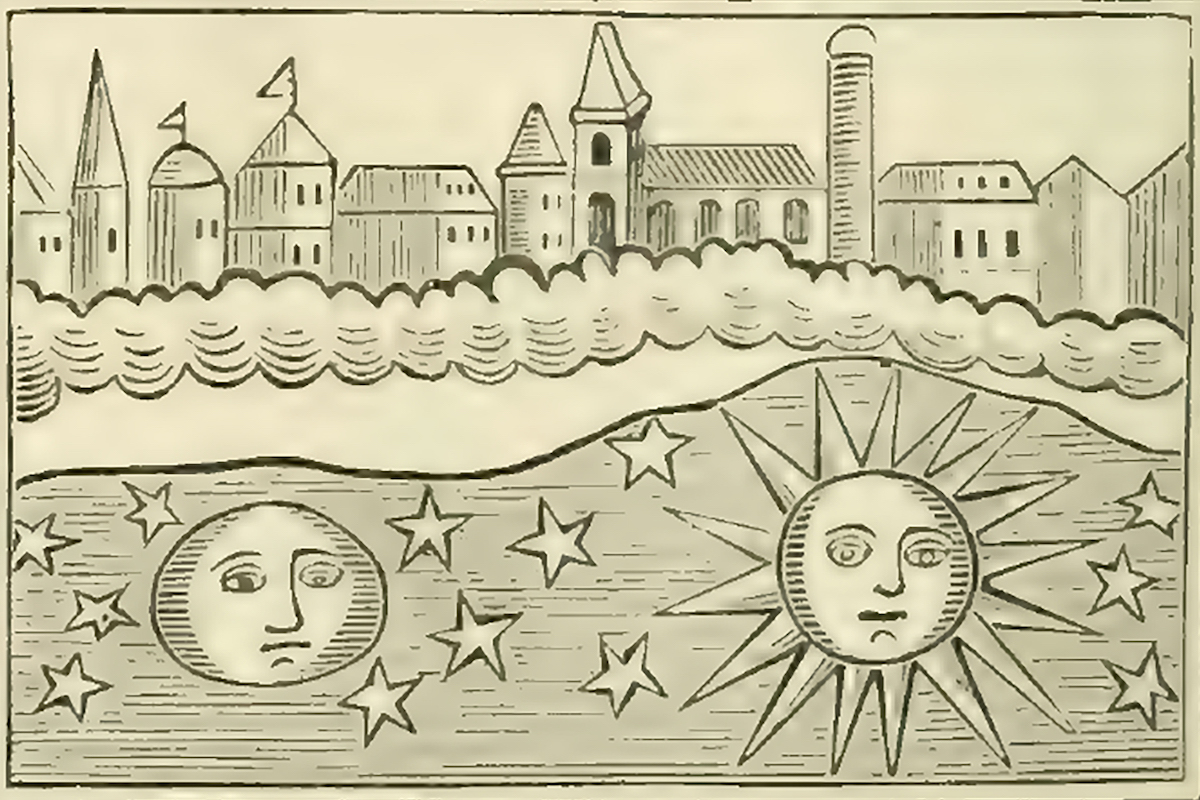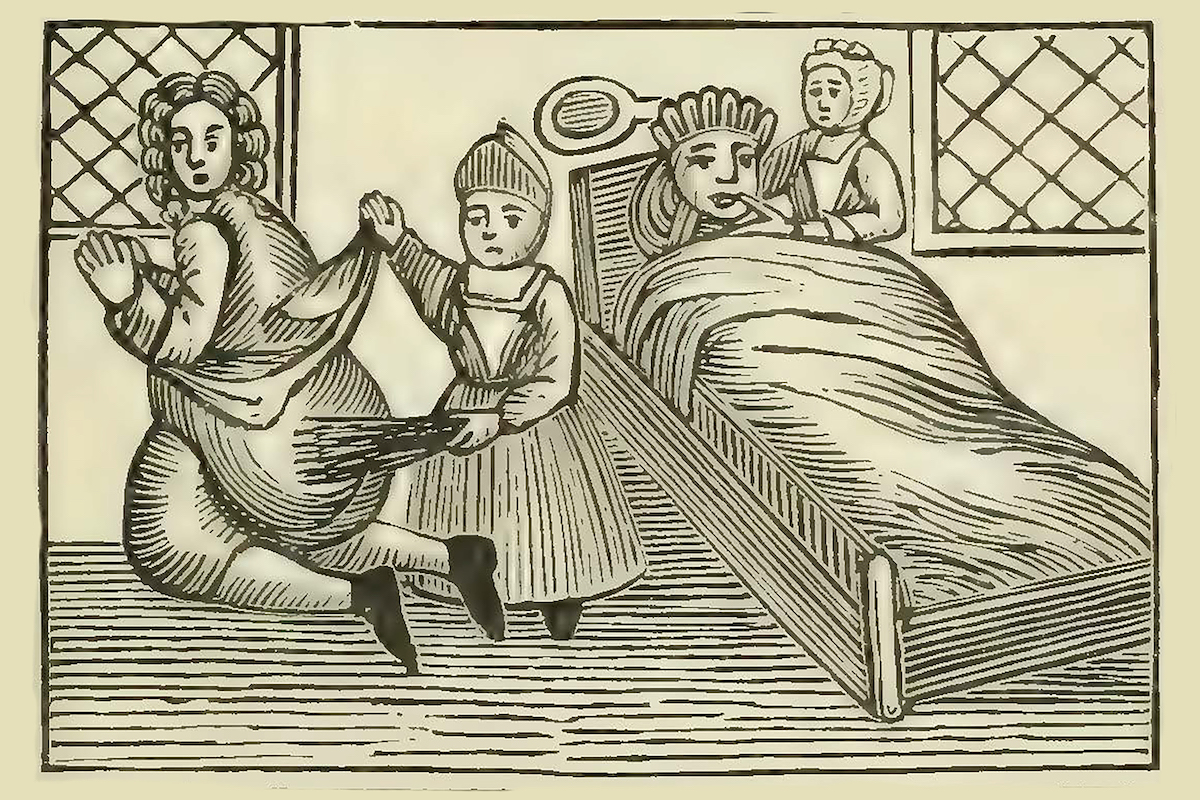
The World Turned Upside Down or The Folly of Man Exemplified in Twelve Comical Relations upon Uncommon Subjects is Illustrated with Twelve Curious Cuts Truly Adapted to Each Story. The witty woodcuts show various role reversals. A cow becomes a butcher and the butcher his meat. A soldier tends to a nurse. Rabbits hunt lions.
The collection begins with what looks like children parting their mother and father (above). And a poem:
Philosophers of old will tell us,
As Tycho, and such merry fellows,
That round this habitable ball
The beamy sun did yearly fall ;
No wonder then the world is found
By change of place Turn’d Upside Down ;
If revolutions strange appear
Within the compass of the sphere ;
If men and things succession know,
And no dependance reigns below ;
Since tis allow’d the world we dwell in,
Is always round the sun a sailing ;
Experience to our knowledge brings ;
That times may change as well as things.
And art than nature wiser grown,
Turns every object upside down,
Whim’s epidemic takes her rise,
And constancy’s become a vice.
He that to do is fortunate.
The darling minions of his fate !
To morrow feels his fate’s displeasure,
Spoil’d his hoarded idol treasure !
And like this man, his emblem shows,
A sudden revolution knows.

His fortune grows profoundly scurvy
Turns the poor earthworms topsy turvy,
Becomes the tennis ball of fools,
Things quite form’d out of nature’s rules.
Such as you see Atlas bear
Upon their backs this mighty sphere.
The young, the old, the middle aged.
Are all in this great task engaged ;
And strive with wondrous eagerness
Which all the greatest part possess.
Since folly then has got the ascendant,
He’s most a fool that han’t a hand in’t ;
And as the mad brain’d world runs round
Still keeps towards the rising ground.
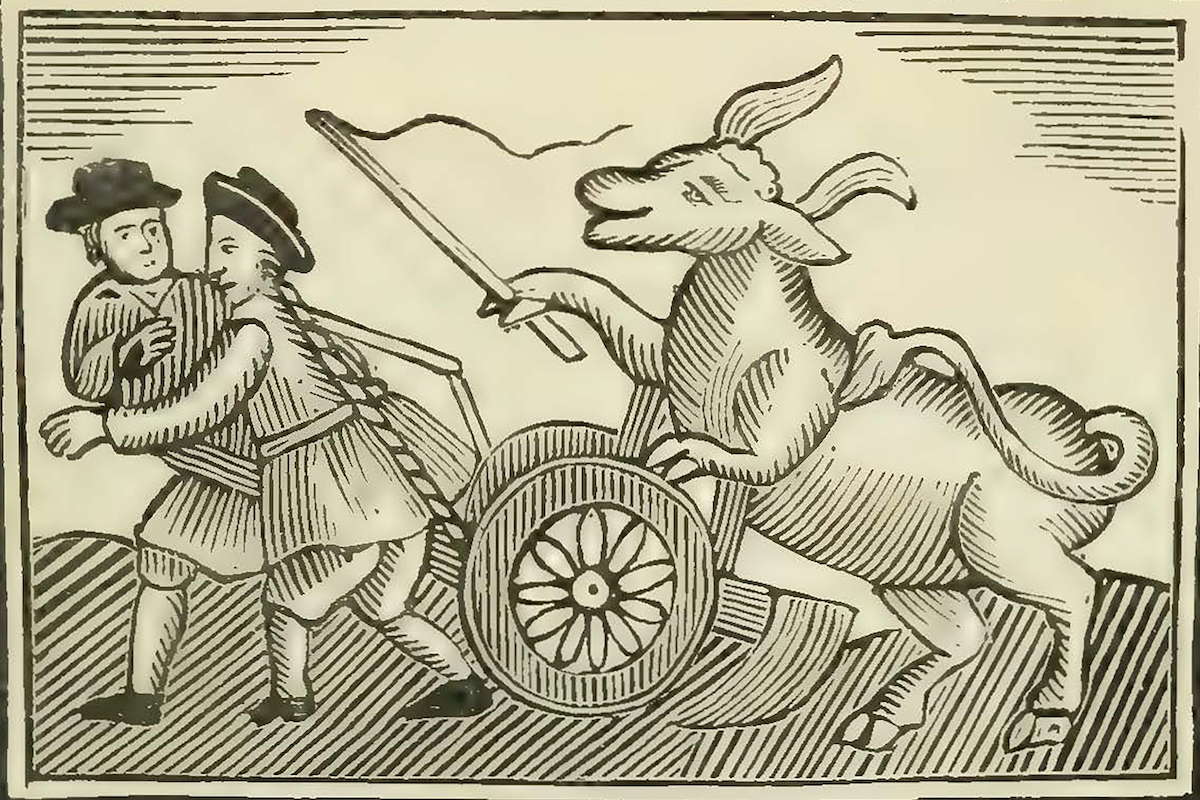
Ox and The Farmer
Popular from the 17th to the 19th centuries, chapbooks were small paper-covered booklets, usually printed on a single sheet or portion of a sheet, folded into books of 8, 12, 16 and 24 pages, often illustrated with crude woodcuts. They were sold by ‘chapmen’ for a penny or less on the streets and at fairs and markets.
Chapbooks, along with broadsides, were aimed at the masses, like Tijuana Bibles and Jose Posada’s Calaveras. They covered subjects as diverse as prophecies, sensational histories, political tracts and last words of murderers, songs and biographies.
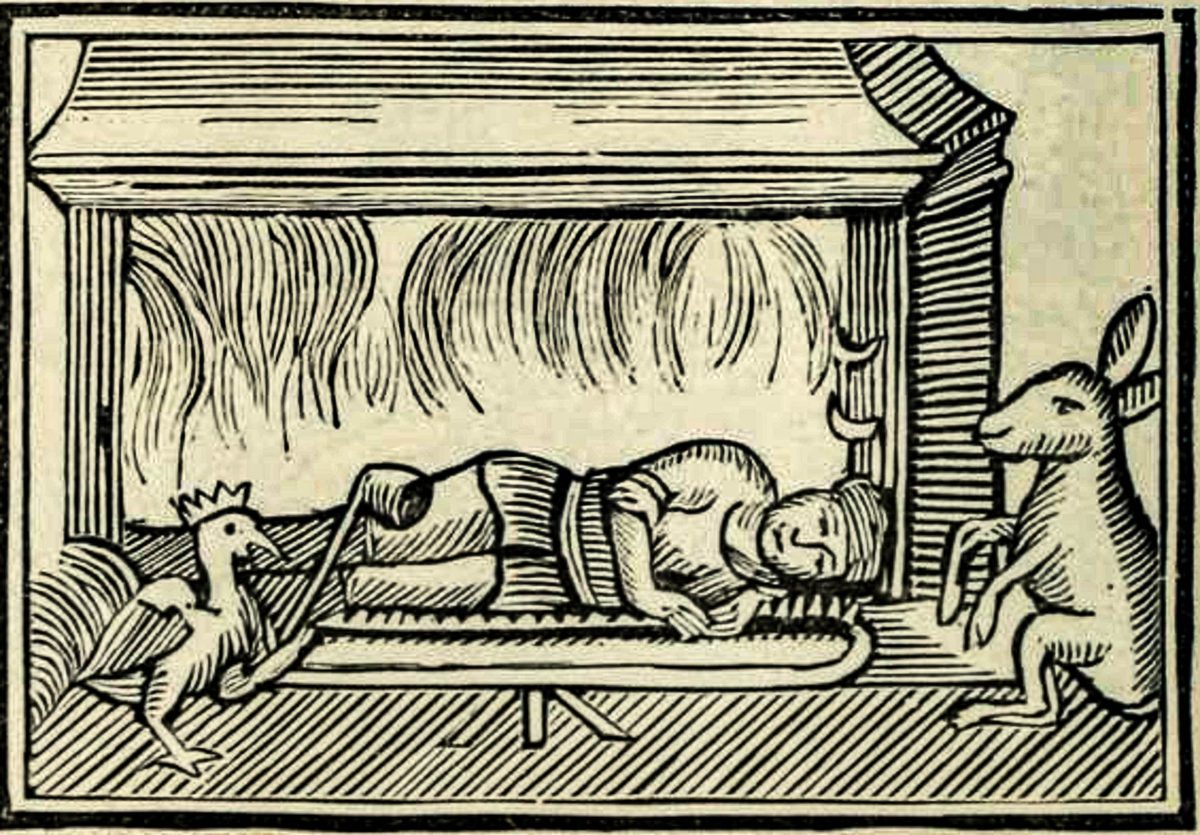
The Reward of Roguery, or The Roasted Cook
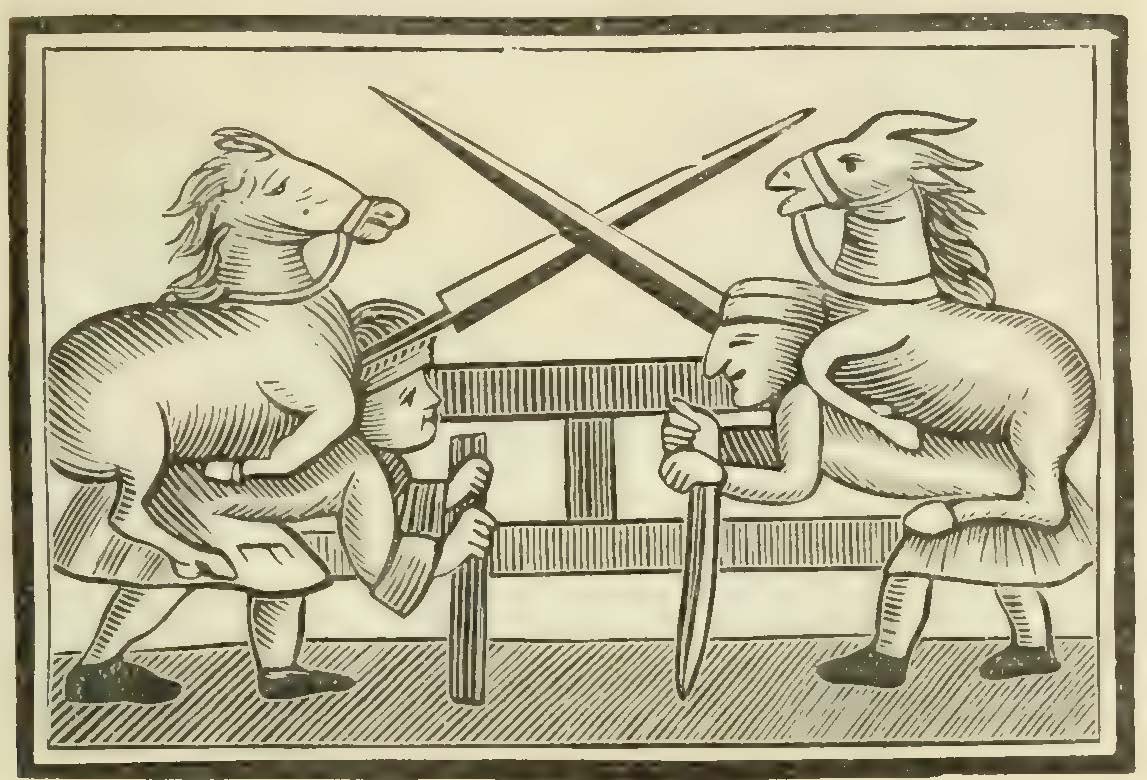
The Dual of the Palfries
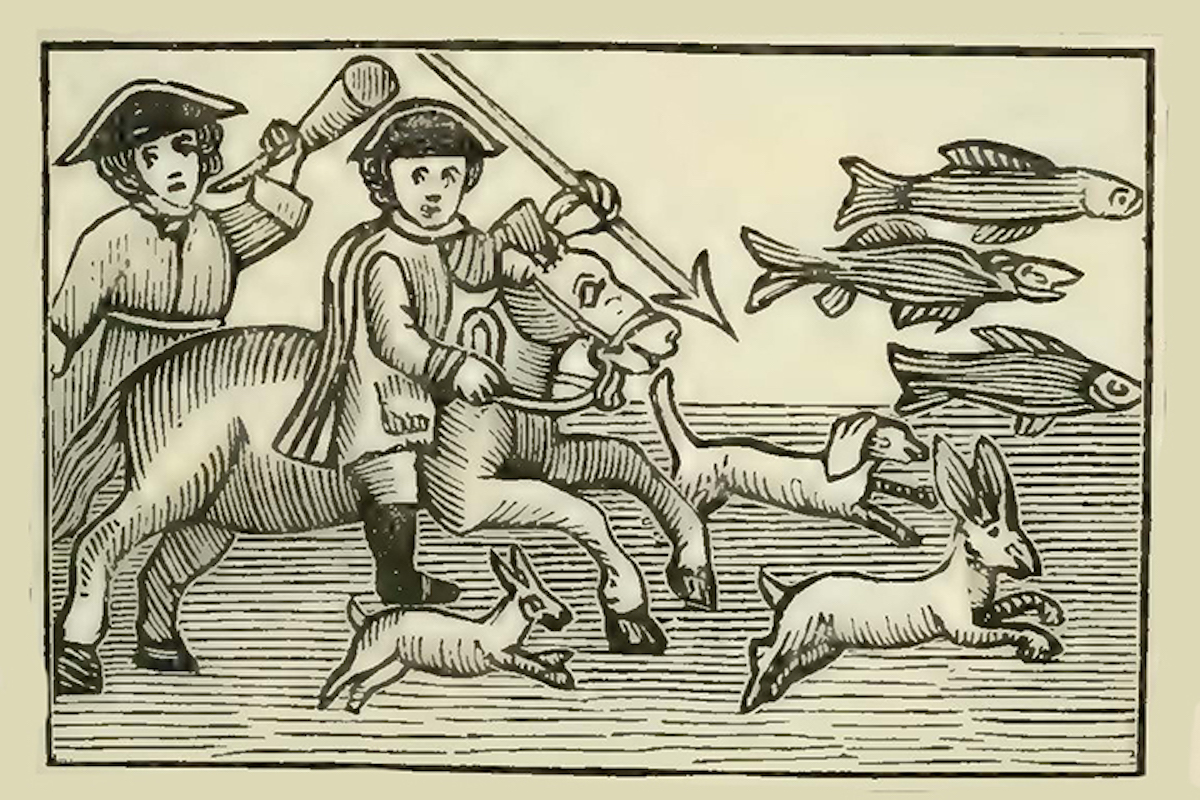
The Mad Squire and His Fatal Hunting
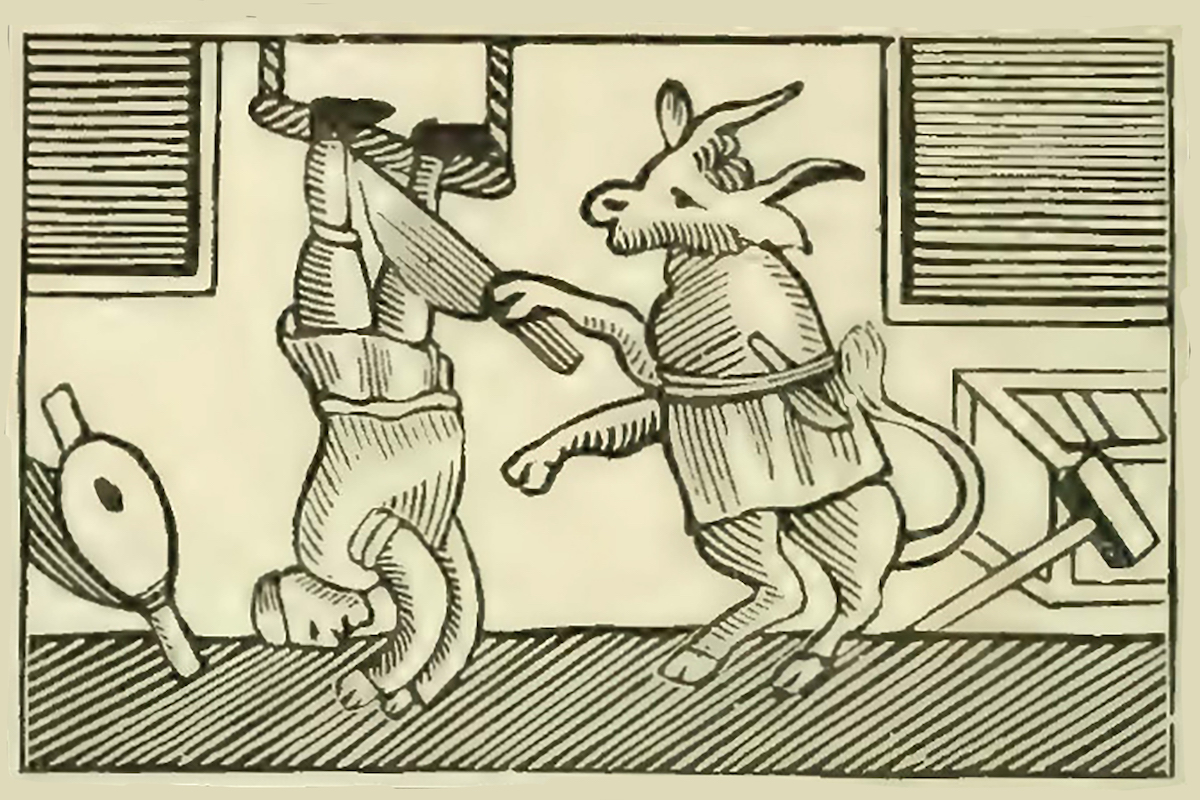
The Ox Turned Butcher
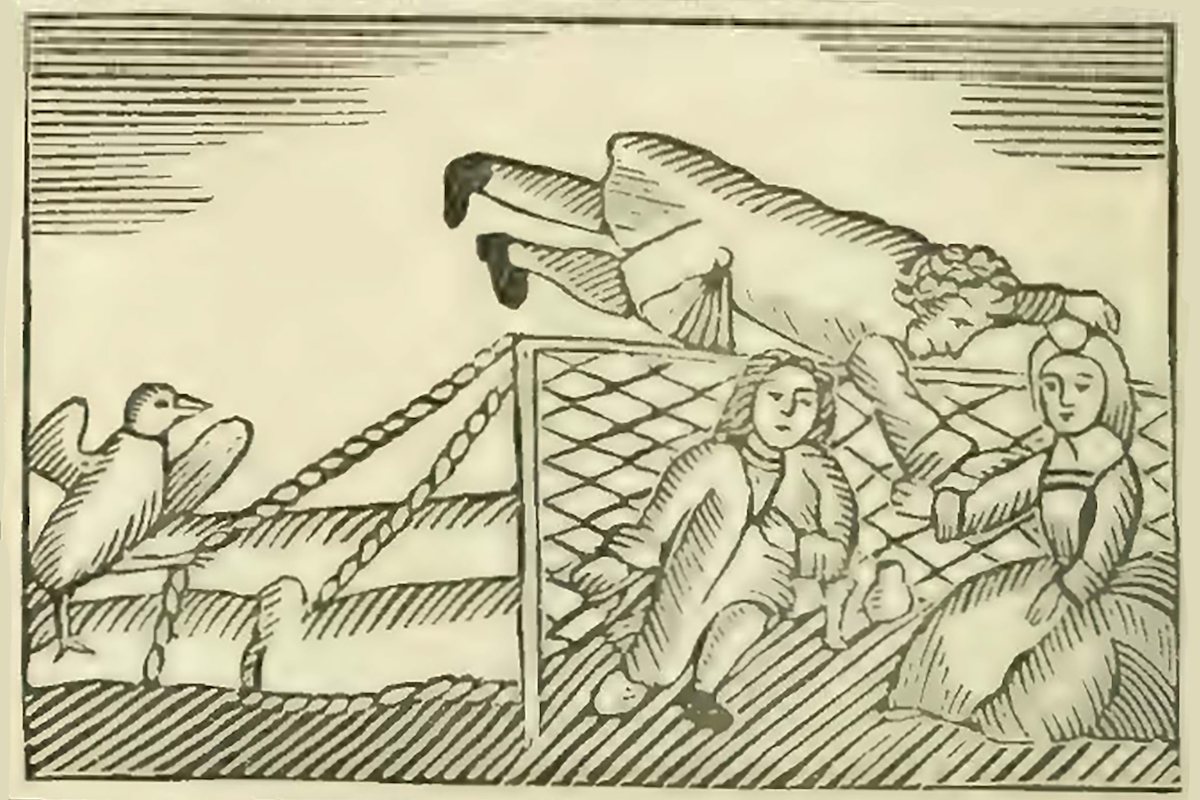
Gallantry a la mode – or The Lovers Catched by The Bird

The Honest Ass And Miller
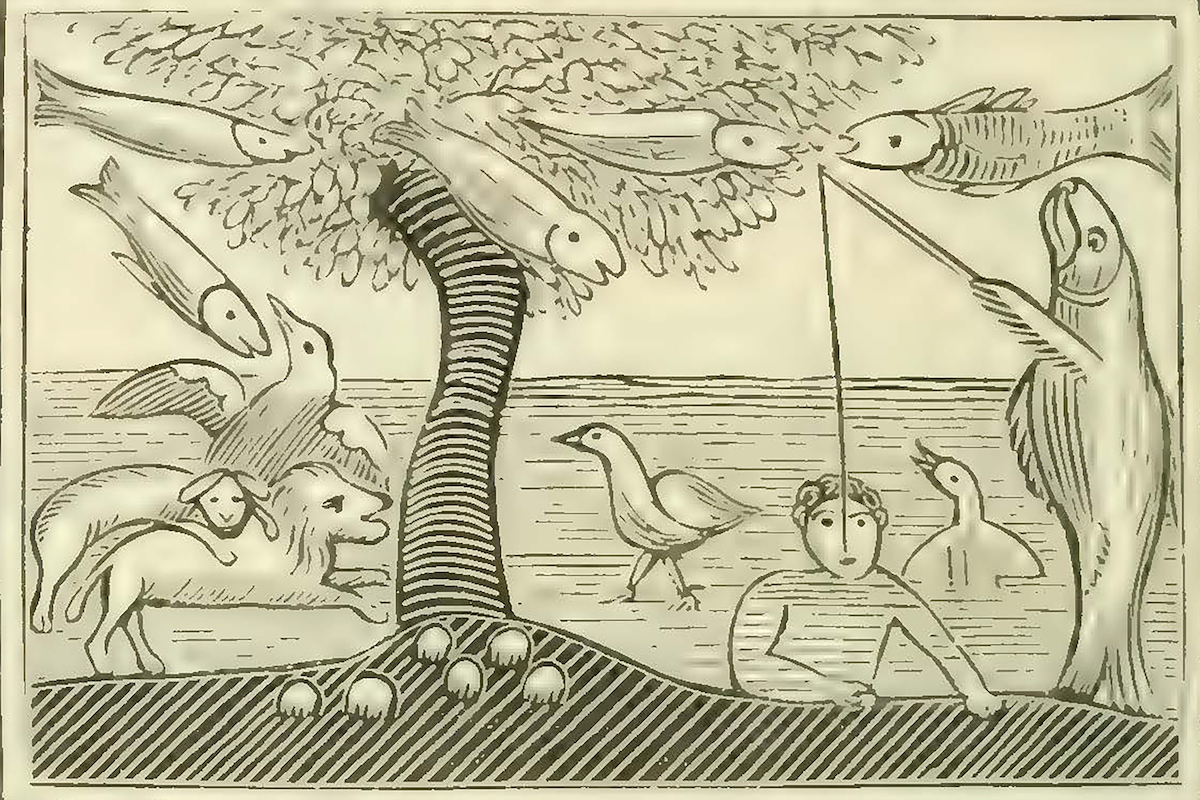
The water wonder or fishes lord of creation
Via Chapbooks of the Eighteenth Century (1882) edited by John Ashton.
Would you like to support Flashbak?
Please consider making a donation to our site. We don't want to rely on ads to bring you the best of visual culture. You can also support us by signing up to our Mailing List. And you can also follow us on Facebook, Instagram and Twitter. For great art and culture delivered to your door, visit our shop.

